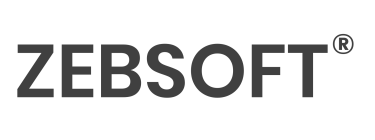Structured Risk Management That’s Built for the Real World
Risk isn’t just a spreadsheet problem. It’s a visibility problem. Zebsoft gives you a complete risk management platform — aligned to ISO standards, backed by traceable evidence, and connected to the rest of your compliance system.
Whether you’re tackling operational, environmental, information security, or supply chain risk — Zebsoft helps you take control.
Your Risk Register, Reimagined
Core Capabilities:
✅ Fully integrated 5×5 risk matrix with auto-prioritisation
✅ Link risks to locations, processes, and controls
✅ Create unlimited risk types — from infosec to environmental
✅ Assign visibility by team, site, and role
✅ Track control effectiveness and mitigation tasks
✅ Generate audit-ready logs with every update
✅ Link risks to incidents, audits, and documents
✅ Support for ISO 9001, 14001, 45001, 27001, 22301, and more
Risk That Lives Where Work Happens
No more disconnected tools. Zebsoft links risks directly to:
- Audit actions
- Documents & policies
- Asset and infrastructure registers
- Supplier performance
- Incident records
- Business continuity plans

What Makes Zebsoft Different?
One Connected System
Zebsoft isn’t just a risk register — it’s a modular platform that ties risk into every part of your governance framework.
Role-Based Control
Only the right people see the right risks. You define sensitivity and visibility — by site, role, or team.
Traceability You Can Prove
Every action is logged. Every control is evidenced. Every risk is part of a wider compliance map.

Who’s It For?
- Compliance Managers
- HSE & Risk Officers
- Operations & Plant Managers
- Information Security Leads
- ISO/IEC 27001 & 9001 Implementers

What Our Customers Say
⭐️⭐️⭐️⭐️⭐️
“We cut our audit prep time by 70%. ZEBSOFT made our ISO 9001 re-certification effortless.”
— QA Manager, UK Manufacturing Group
⭐️⭐️⭐️⭐️⭐️
“Finally, an audit system that actually talks to the rest of the business.”
— Compliance Director, EU Logistics Company
You Don’t Have to Change Everything — Just Start the Right Way.
Zebsoft is trusted by risk and compliance teams across manufacturing, healthcare, logistics, energy, and professional services. Whether you’re ISO-certified or just starting, we help you build a system that scales — and proves it works.
Not Sure Where to Start?
Find Your Fit:
Zebsoft adapts to you. Whether you’re responsible for compliance, operations, security, or strategy, this guided form will help pinpoint the ideal system configuration for your role and needs.
Step in. Answer a few simple questions.
We’ll show you exactly how Zebsoft fits — from modules to Shields, with a clear outcome.
No jargon. No overwhelm. Just clarity.
Let’s build the right solution together.

